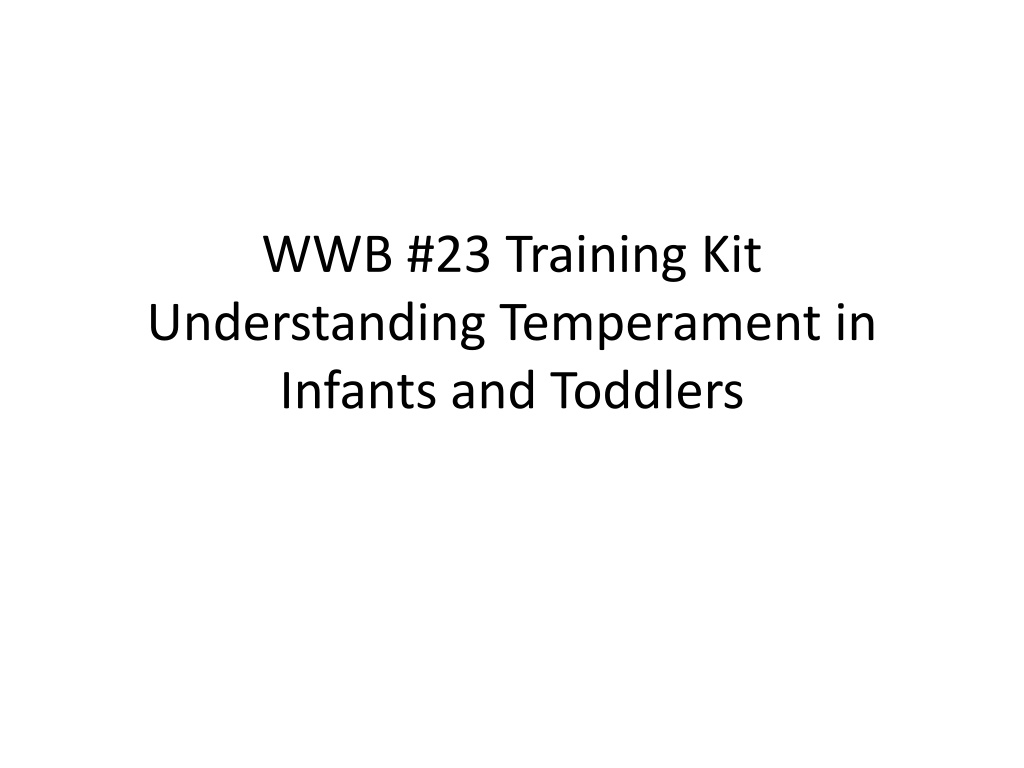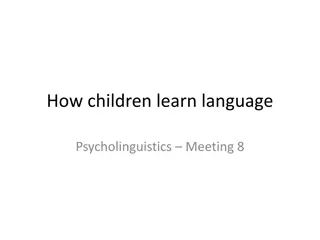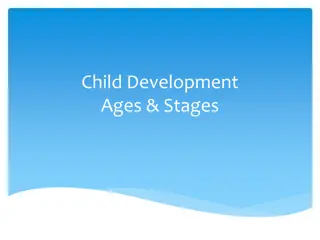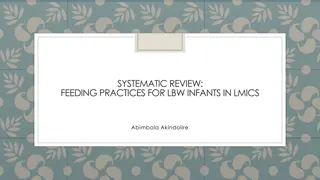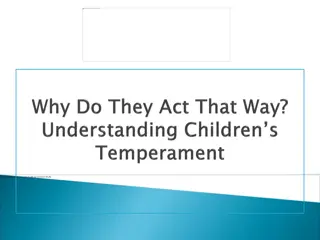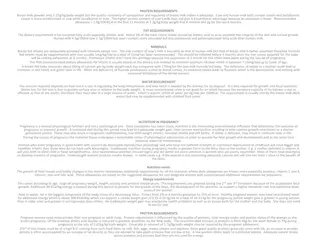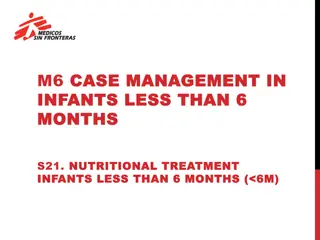Understanding Temperament in Infants and Toddlers
Child temperament plays a crucial role in their behavior and interactions. This training kit explores the different temperament types - Easy, Active, Slow to warm - and how understanding them can help caregivers and families support children effectively. Recognizing and respecting individual temperamental traits can lead to better outcomes for children in various settings.
Download Presentation

Please find below an Image/Link to download the presentation.
The content on the website is provided AS IS for your information and personal use only. It may not be sold, licensed, or shared on other websites without obtaining consent from the author. Download presentation by click this link. If you encounter any issues during the download, it is possible that the publisher has removed the file from their server.
E N D
Presentation Transcript
WWB #23 Training Kit Understanding Temperament in Infants and Toddlers
What is Temperament? A child s temperament describes the way in which he/he approaches and reacts to the world It is his/her personal style. Researchers describe temperament as having three types: Easy or flexible Active or feisty Slow to warm or cautious
What is Temperament? Activity 1 Laura is 20 months old and just started in child care. She is a lovely child with a beautiful smile. She gets hungry or tired at different times each day; she seems to always want to run, climb, jump. She does not enjoy quiet activities, such as games and book reading. Laura has trouble transitioning between activities sometimes resulting in 10 minutes of trantrums.
What is Temperament? It is important to refrain from thinking of a child s temperamental traits as good or bad. What do children from the three different temperament groups bring to your programs? Easy or flexible Active or feisty Slow to warm or cautious
Why Is Temperament Important? Temperament influences a child s behavior and the way she/he interacts with others. Understanding a child s temperament can help providers and families better understand how young children react and relate to the world around them. Information about a child s temperament can guide parents and caregivers to identify strengths and needed supports. Caregivers can seek a goodness of fit.
Using What You Know about Temperament to Support Children Reflect on your own temperament Understanding your temperament can help you identify the goodness of fit for each child in your care. Knowing more about your own temperament traits will help you to take the child s perspective. In what temperament category do you see yourself? Why? How would you feel in a classroom that is more attuned to a temperament different than your own?
Using What You Know about Temperament to Support Children Create partnerships with families to understand a child s temperament. Share what you know about temperament with families including the three temperament types. Ask parents to help you understand their child s activity level, responses to new situations, persistence, distractibility, adaptability, mood, intensity, sensitivity, and regularity (You may want to refer to the Temperament Continuum handout provided with these materials). Recognize that temperament can be influenced by family culture.
Using What You Know about Temperament to Support Children Respect and value each child s temperament when individualizing your curriculum. Some caregiving practices support all children s development, yet certain practices might be especially important for children with certain temperament types. What practices might be important for each of the three temperament types? Easy or flexible Active or feisty Slow to warm or cautious
Using What You Know about Temperament to Support Children What practices might be important for each of child needs for each of the three temperament types? Easy or flexible (Child may be less likely to demand attention and make needs known) Active or feisty (Child may experience intense emotions and reactions) Slow to warm or cautious (Child may have difficulty with new situations or people)
Brining It Together Pair-Think-Share Reflecting on Laura from the beginning of this training kit, how might you address her needs? Laura is 20 months old and just started in child care. She is a lovely child with a beautiful smile. She gets hungry or tired at different times each day; she seems to always want to run, climb, jump. She does not enjoy quiet activities, such as games and book reading. Laura has trouble transitioning between activities sometimes resulting in 10 minutes of trantrums.
Pre-Training Survey What is temperament? What are the three temperament types? What are some examples of family culture impacting children s temperament? How can caregivers knowledge of temperament be used to support children s development and learning?
